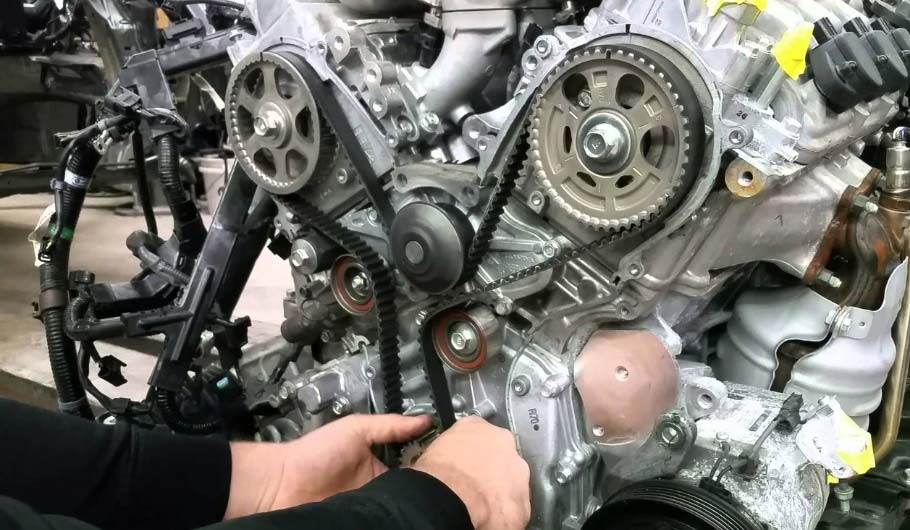

However, if it’s accompanying any of the above symptoms, it may be time to have your timing belt serviced. Your Check Engine Light Comes OnĪs always, it’s never a good idea to ignore your Check Engine light when it illuminates on your dashboard. The meaning of TIMING BELT is a belt that connects the camshaft and the crankshaft in a vehicle engine (as in an automobile) and coordinates the opening and. The timing belt has grooves or teeth that. At a bare minimum, you should replace your timing belt once every 60,000 to 105,000 miles, depending on your vehicle’s model. Modern belts are made of rubber, fiberglass, and Kevlar, giving them extra strength and ensuring the rotation is quiet. If parts are out of sync or your timing belt is misaligned, you may also experience vibration or shaking while your engine is running. These shafts mange the pistons of the engines and are designed to initiate the engine cycle and transmit torque. Timing belts were popularized in the 1960s when Pontiac came out with the overhead cam. Vibrating or Shaking While Your Engine is Running If this is the case, you’re likely to notice squealing or rubbing if you have a timing belt and ticking if your car uses a timing chain instead.
#Car timing belt manual#
Squealing, Rubbing or Ticking Noises from Under Your HoodĪs your timing belt or timing chain wear out, they can come out of alignment. Check your owners manual for the proper interval to replace your timing belt and water pump or stop in and have one of our service experts review your car. This also risks more damage to other parts, as heat can be hard on the metal parts of your engine. If any or all of those are not operating fully, it can cause your engine to overheat. However, your timing belt helps power the water pump, oil pump, and injection pump. Numerous car repairs may be signaled by an overheating engine. Its application range extends from minimum drives (computer printers) to heavy-duty machinery (oil pumps, etc). In older cars, these tensioners would need. Gates classical synchronous PowerGrip Timing belts oer a maintenance-free, economical, and OE quality solution for your conventional timing drives such as chains and gears. If these intake valves open too early, you’ll experience a power loss. To work effectively, a timing belt must have a certain amount of tension controlled by the timing belt tensioner. This is because your timing belt controls the intake valves that dictate the fuel-air mixture circulating through your engine.

Decreased Engine Power or Trouble Starting Your Carīecause your timing belt controls so many moving parts under the hood of your car, as the timing belt wears out, you may notice a decrease in your engine’s power or even difficulty starting your engine.


 0 kommentar(er)
0 kommentar(er)
